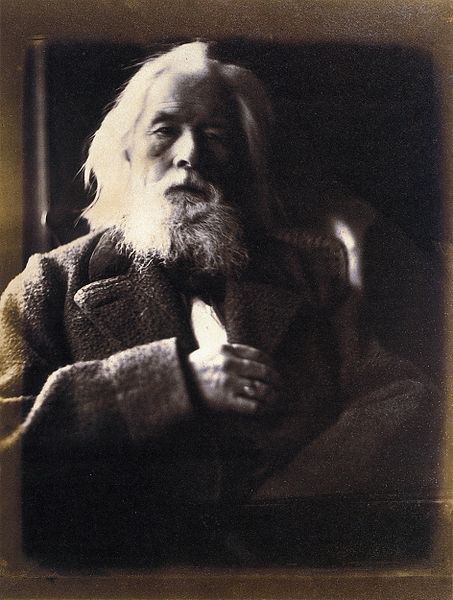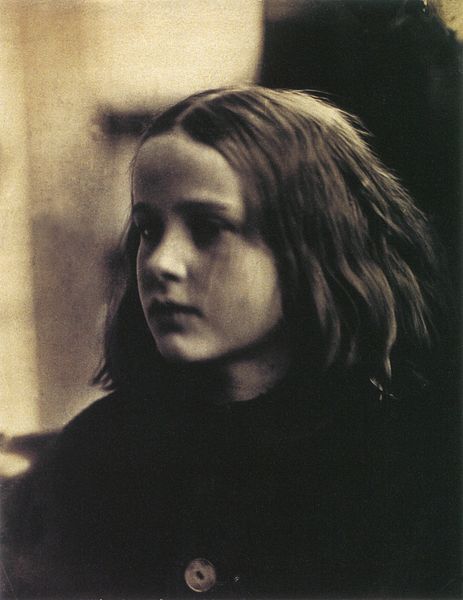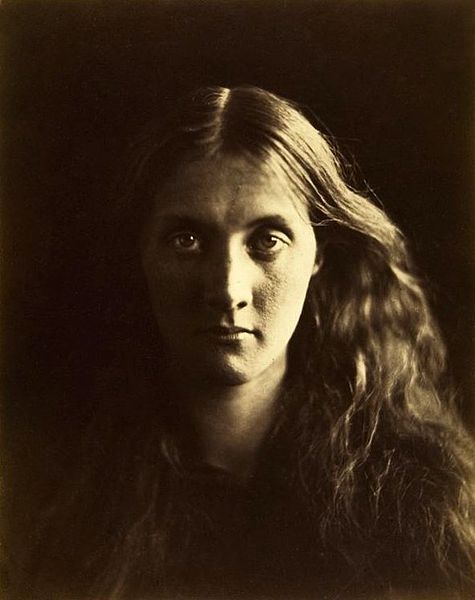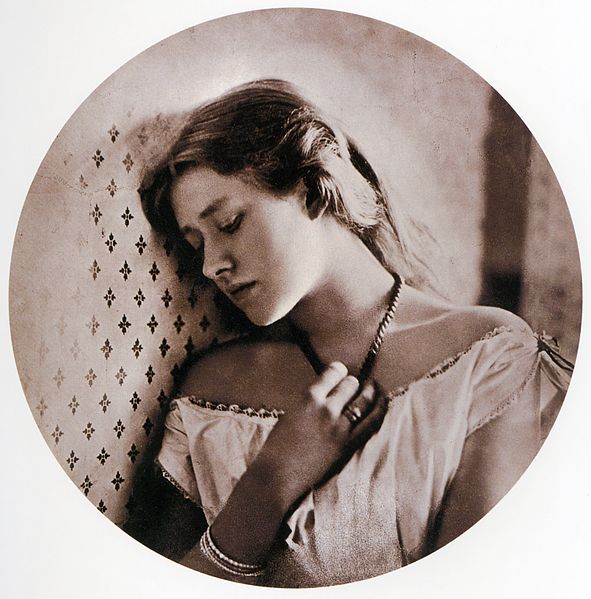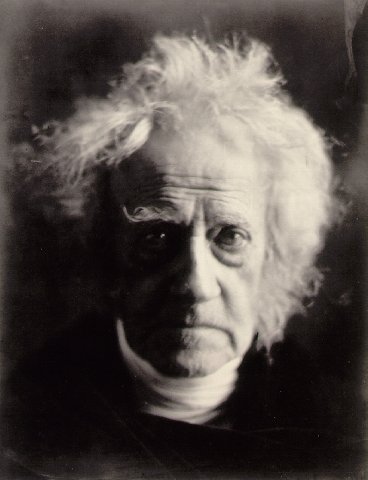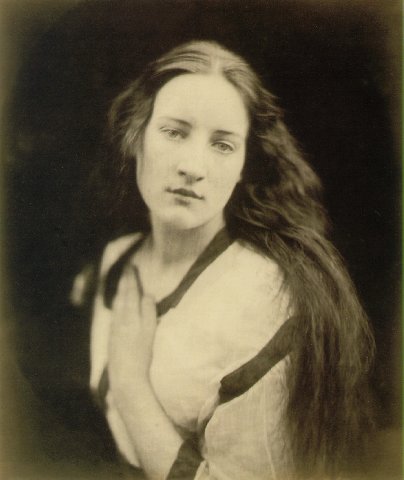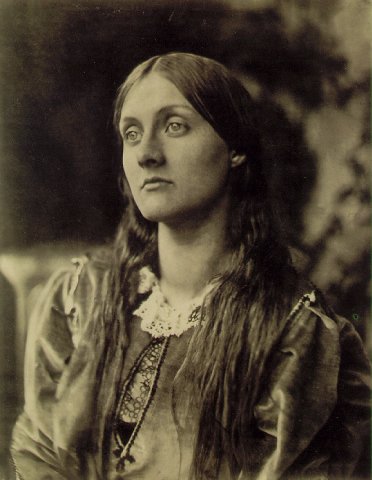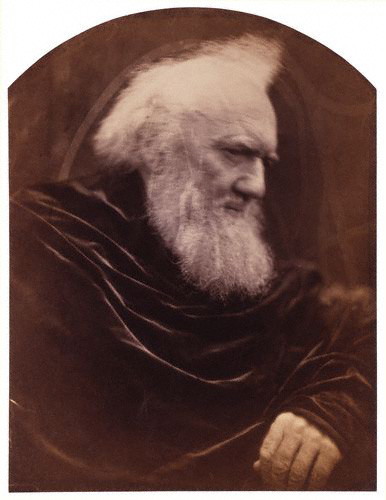<Back to Index>
- Literary Critic Vissarion Grigoryevich Belinsky, 1811
- Photographer Julia Margaret Cameron, 1815
- Minister of the Interior Eduard Heinrich Rudolph David, 1863
PAGE SPONSOR
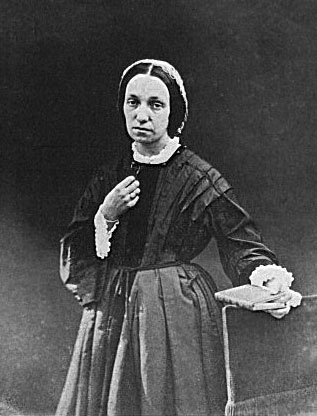
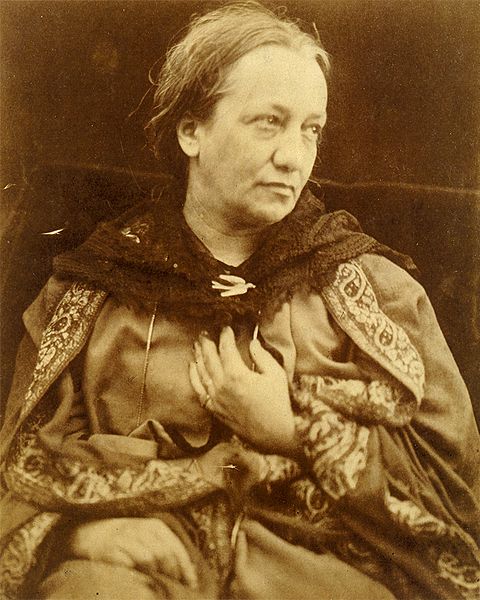
Julia Margaret Cameron (11 June 1815 – 26 January 1879) was a British photographer. She became known for her portraits of celebrities of the time, and for photographs with Arthurian and other legendary themes.
Cameron's
photographic career was short, spanning eleven years of her life
(1864 – 1875). She took up photography at the relatively late age of 48,
when she was given a camera as a present. Although
her style was not widely appreciated in her own day, her work has had
an impact on modern photographers, especially her closely cropped
portraits. Her house, Dimbola Lodge, on the Isle of Wight is open to the public.
Julia Margaret Cameron was born Julia Margaret Pattle in Calcutta, India, to James Pattle, a British official of the East India Company, and Adeline de l'Etang, a daughter of French aristocrats.
Julia was from a family of celebrated beauties, and was considered an
ugly duckling among her sisters. As her great - niece Virginia Woolf wrote
in the 1926 introduction to the Hogarth Press collection of Cameron's
photographs, "In the trio [of sisters] where...[one] was Beauty; and
[one] Dash; Mrs. Cameron was undoubtedly Talent".
Cameron
was educated in France, but returned to India, and in 1838 married
Charles Hay Cameron, a jurist and member of the Law Commission
stationed in Calcutta, who was twenty years her senior. In 1848,
Charles Hay Cameron retired, and the family moved to
London, England. Cameron's sister, Sarah Prinsep, had been living in London and hosted a salon at Little Holland House, the dower house of Holland House in Kensington, where famous artists and writers regularly visited. In 1860, Cameron visited the estate of poet Alfred Lord Tennyson on the Isle of Wight. Julia was taken with the location, and the Cameron family purchased a property on the island soon after. They called it Dimbola Lodge after the family's Ceylon estate.
The basic techniques of soft - focus "fancy portraits", which she later developed, were taught to her by David Wilkie Wynfield. She later wrote that "to my feeling about his beautiful photography I owed all my attempts and indeed consequently all my success".
Alfred Lord Tennyson, her neighbour on the Isle of Wight, often brought friends to see the photographer.
Cameron was sometimes obsessive about her new occupation, with subjects sitting for countless exposures in the blinding light as she laboriously coated, exposed, and processed each wet plate. The results were, in fact, unconventional in their intimacy and their particular visual habit of created blur through both long exposures, where the subject moved and by leaving the lens intentionally out of focus. This led some of her contemporaries to complain and even ridicule the work, but her friends and family were supportive, and she was one of the most prolific and advanced of amateurs in her time. Her enthusiasm for her craft meant that her children and others sometimes tired of her endless photographing, but it also means that we are left with some of the best of records of her children and of the many notable figures of the time who visited her.
During her career, Cameron registered each of her photographs with the copyright office and kept detailed records. Her shrewd business sense is one reason that so many of her works survive today. Another reason that many of Cameron's portraits are significant is because they are often the only existing photograph of historical figures. Many paintings and drawings exist, but, at the time, photography was still a new and challenging medium for someone outside a typical portrait studio.
The bulk of Cameron's photographs fit into two categories – closely framed portraits and illustrative allegories based on religious and literary works. In the allegorical works in particular, her artistic influence was clearly Pre-Raphaelite, with far - away looks and limp poses and soft lighting.
Cameron's sister ran the artistic scene at Little Holland House, which gave her many famous subjects for her portraits. Some of her famous subjects include: Charles Darwin, Alfred Lord Tennyson, Robert Browning, John Everett Millais, William Michael Rossetti, Edward Burne - Jones, Ellen Terry and George Frederic Watts. Most of these distinctive portraits are cropped closely around the subject's face and are in soft focus. Cameron was often friends with these Victorian celebrities, and tried to capture their personalities in her photos. Among Cameron's lesser known images are those she took of Mary Emily ('May') Prinsep, wife of Hallam Tennyson, 2nd Baron Tennyson, the elder son of Alfred Tennyson and a British colonial administrator. Cameron's portraits of May Prinsep, taken on the Isle of Wight, show a somewhat plain woman shot head-on and without affect.
Cameron's posed photographic illustrations represent the other half of her work. In these illustrations, she frequently photographed historical scenes or literary works, which often took the quality of oil paintings. However, she made no attempt in hiding the backgrounds. Cameron's friendship with Tennyson led to him asking her to photograph illustrations for his Idylls of the King. These photographs are designed to look like oil paintings from the same time period, including rich details like historical costumes and intricate draperies. Today, these posed works are sometimes dismissed by art critics. Nevertheless, Cameron saw these photographs as art, just like the oil paintings they imitated.
In 1875, the Camerons moved back to Ceylon (now Sri Lanka).
Julia continued to practice photography but complained in letters about
the difficulties of getting chemicals and pure water to develop and
print photographs. Also, in India, she did not have access to Little
Holland House's artistic community. She also did not have a market to
distribute her photographs as she had in England. Because of this,
Cameron took fewer pictures in India. These pictures were of posed
Indian natives, paralleling the posed pictures that Cameron had taken
of neighbours in England. Almost none of Cameron's work from India
survives. Cameron caught a bad chill and died in Kalutara, Ceylon in 1879. Cameron's
niece Julia Prinsep Stephen (née Jackson; 1846 – 1895) wrote the
biography of Cameron, which appeared in the first edition of the Dictionary of National Biography, 1886. Julia Stephen was the mother of Virginia Woolf, who wrote a comic portrayal of the "Freshwater circle" in her only play Freshwater. Woolf edited, with Roger Fry, a collection of Cameron's photographs. However, it was not until 1948 that her photography became more widely known when Helmut Gernsheim wrote a book on her work. In
1977 Gernsheim noted that although a great photographer, Cameron had
"left no mark" on the aesthetic history of Photography because her work
was not appreciated by her contemporaries and thus not imitated. But this situation was evidently already changing by then thanks to his popularisation of her work, for instance in 1975 Imogen Cunningham had
commented "I'd like to see portrait photography go right back to Julia
Margaret Cameron. I don't think there's anyone better."
